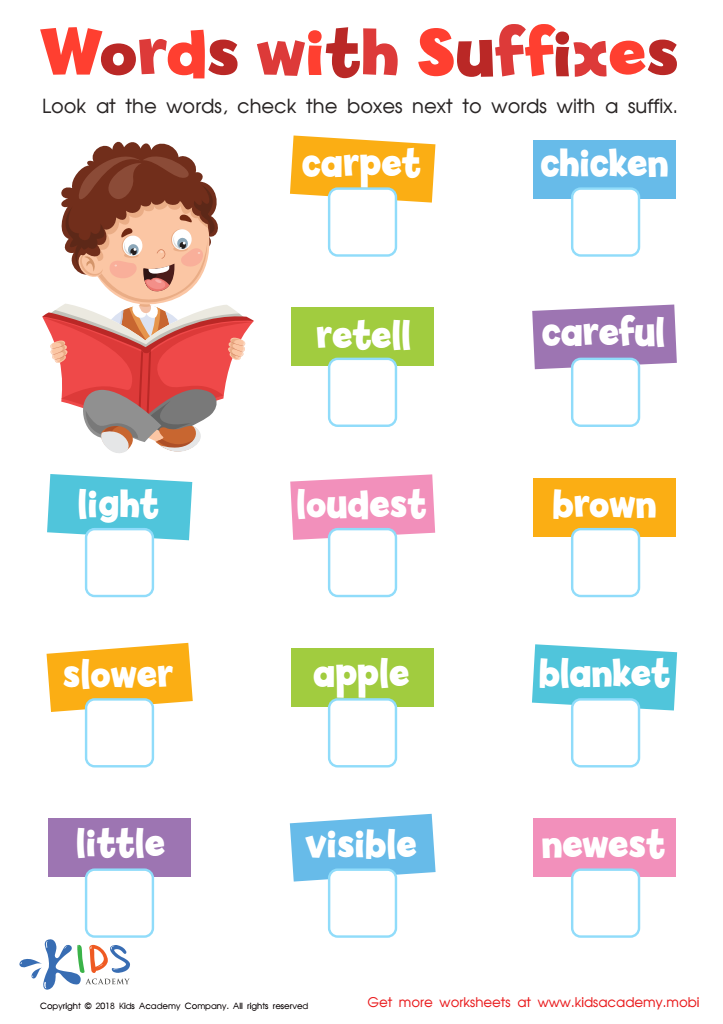Understanding suffixes Normal Worksheets for Ages 4-9
8 filtered results
-
From - To
Unlock your child's potential with our "Understanding Suffixes Normal Worksheets" designed for ages 4-9! These engaging, printable worksheets help young learners grasp the concept of suffixes—building essential reading and writing skills through fun and interactive activities. Each worksheet features colorful illustrations and age-appropriate exercises that guide children in identifying and using various suffixes to expand their vocabulary. Our resources not only promote independent learning but also foster a love for language. Perfect for classroom settings or at-home learning, these worksheets ensure that your child becomes a confident communicator. Start their journey to mastery today with exciting suffix exploration!


Reading: Words With Suffixes Worksheet


Suffix Ness Worksheet


Prefix pre– and Suffix ful– Worksheet


Suffix -Able Worksheet


Prefix and Suffix Worksheet For Grade 3


The Suffix -Ly Worksheet


Suffix –er Printable Worksheet


Suffixes Ful and Less Worksheet
Understanding suffixes is crucial for early readers aged 4 to 9 because it enhances their language skills, vocabulary, and comprehension. Suffixes are word endings that transform a base word's meaning, indicating tense, number, or part of speech. For instance, adding "-ing" to "play" shifts the meaning from a noun to a verb, broadening a child's ability to express actions.
By recognizing suffixes, children can decode new words, facilitating reading and writing. This skill builds confidence, allowing them to experiment with language. For example, learning the suffix "-ly" helps turn adjectives into adverbs, enriching their descriptive abilities in narratives.
Additionally, understanding suffixes fosters better communication, as children can articulate their thoughts more effectively. It assists in spellings and creates a foundation for grammatical skills that will benefit them as they progress in their education.
Lastly, engaging in activities related to suffixes can be both fun and educational, encouraging collaborative learning between parents and teachers. By prioritizing suffixes, we support children in becoming proficient, confident, and creative communicators. Overall, nurturing this understanding provides a vital building block for lifelong literacy skills.
 Assign to My Students
Assign to My Students















